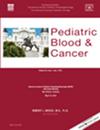Associations of Ferritin and Folate Status With Clinical Outcomes in Childhood Cancer Patients: A Prospective Cohort Study
Abstract
Background
Given the limited research on folate and ferritin status in children with cancer undergoing treatment, we investigated the prevalence of abnormalities and their impact on clinical outcomes and treatment complications.
Methods
This prospective cohort study enrolled children <18 years diagnosed with cancer between August 2010 and February 2014. Data collection occurred at diagnosis, 3, 6, 9, 12 and 18 months. Clinical outcomes were classified as event-free survival or events (relapse, death, the development of new metastasis, becoming palliative) and treatment complications. Micronutrient status was assessed through clinical and nutritional analyses. Binary logistic regression, multilevel model analysis explored relationships between micronutrient status and clinical outcomes.
Results
Eighty-two patients (median [interquartile range] 3.9 (1.9–8.8) years, 56% males) were recruited. Excess ferritin (85%) and folate deficiency (25.5%) were prevalent micronutrient abnormalities throughout the study. Decreased ferritin levels reduced the odds of events by 83.9% (odd ratios = 0.161, 95% CI = 1.000–1.002, p = 0.032). Higher ferritin was associated with increased number of treatment-related complications (B = 7.3E−5, 95% CI = 1.5E−5–0.000, p = 0.013). Folate status showed significant association with body mass index category (χ2 = 9.564, p = 0.008), indicating that overweight and obese patients were more prone to deficiency, and methotrexate (F(2.9); p = 0.06; −2LL (1381)). Haematological malignancies (F(2.8); p = 0.05; −2LL (4244)) and medium and high treatment intensity (F(2.4); p = 0.09; −2LL 4262)) were associated with higher ferritin levels over 18 months.
Conclusions
Paediatric cancer patients undergoing treatment exhibit high ferritin and reduced folate levels. Elevated ferritin is linked to increased toxicity and negative clinical outcomes, highlighting the importance of regular assessment and monitoring of both folate and ferritin. Implementing routine monitoring for these biomarkers could help mitigate adverse effects associated with treatment. Large-scale population-based studies and clinical trials are now warranted.


 求助内容:
求助内容: 应助结果提醒方式:
应助结果提醒方式:


